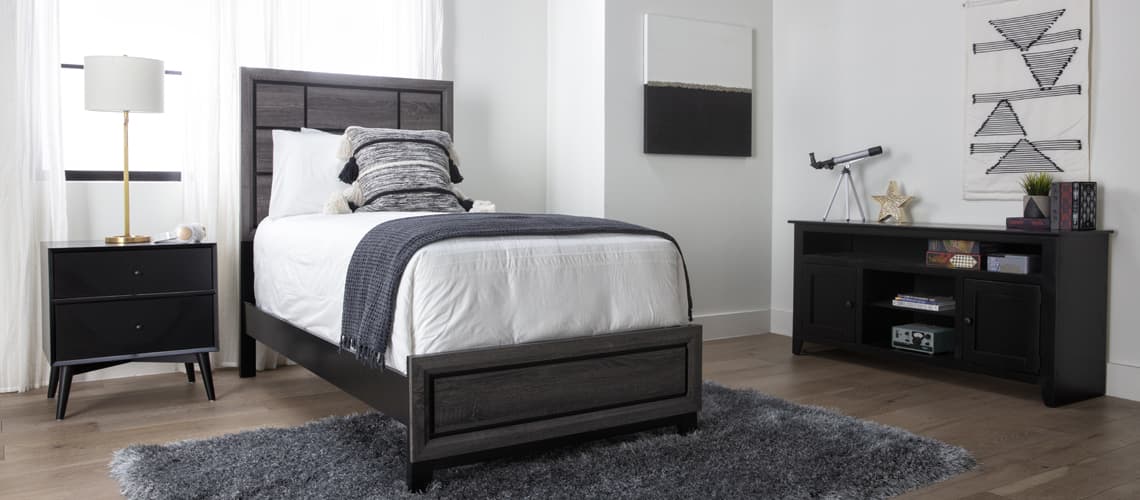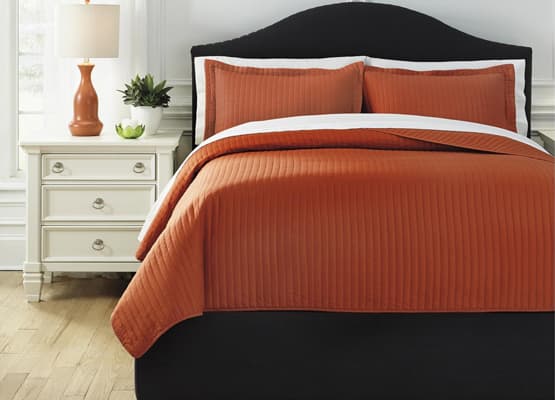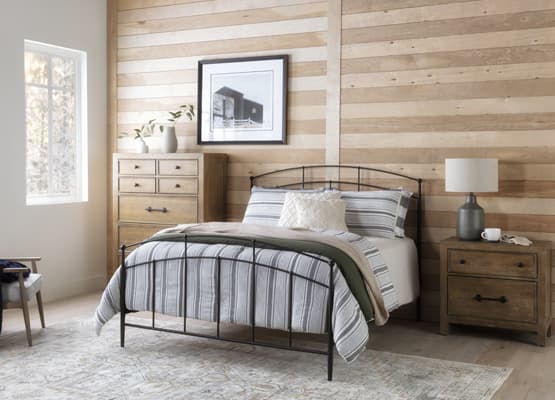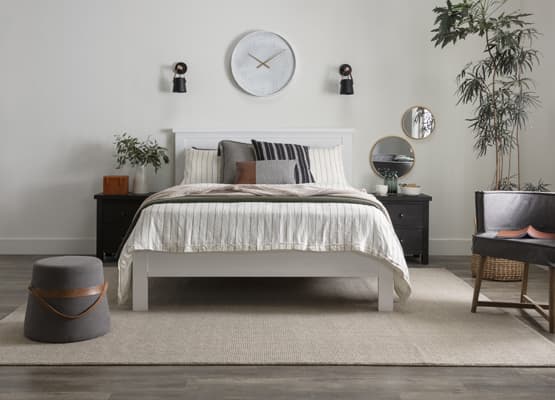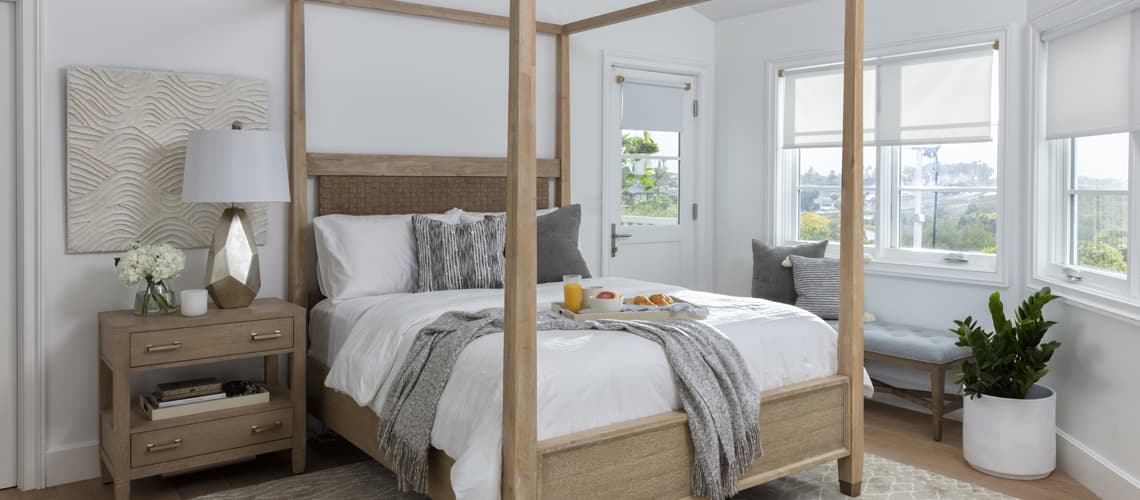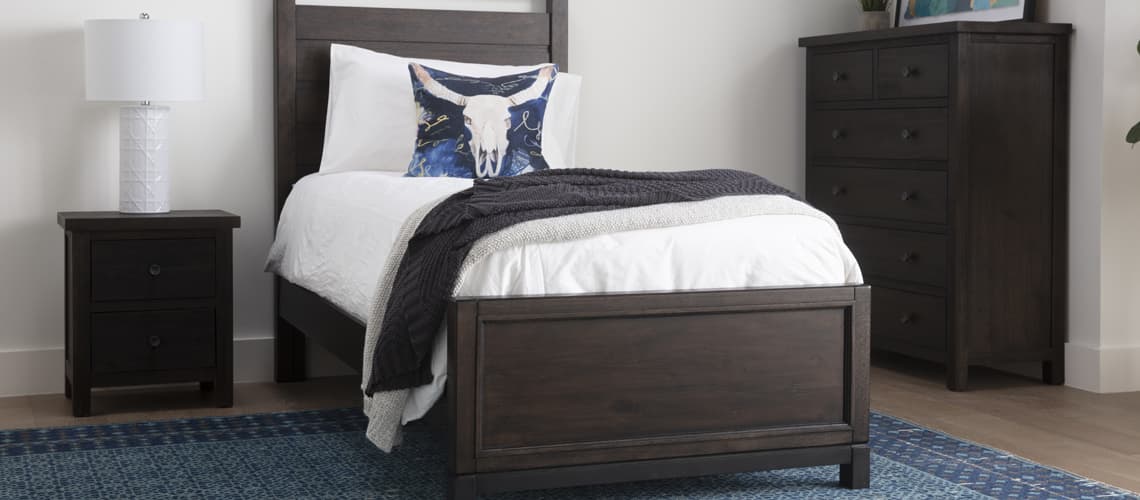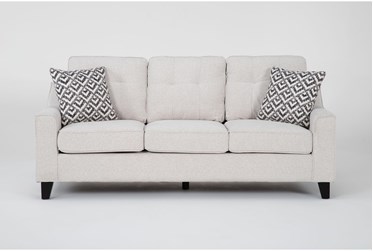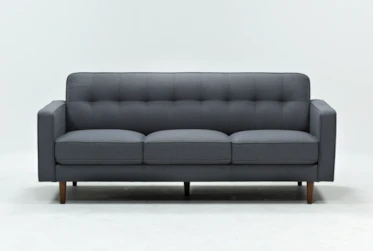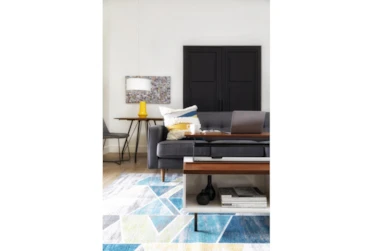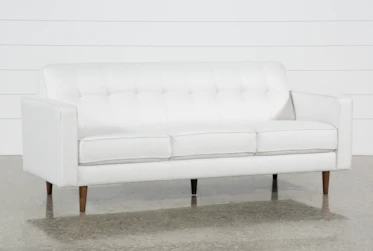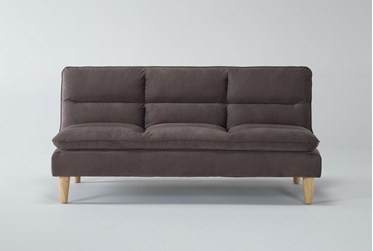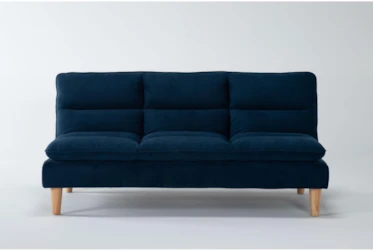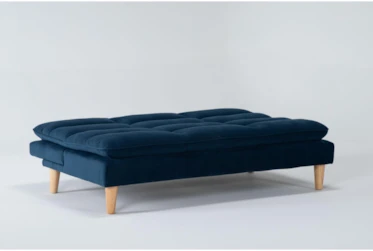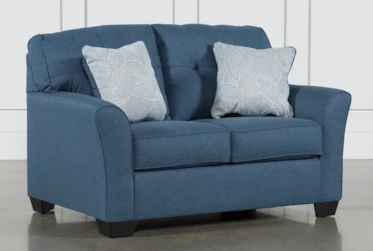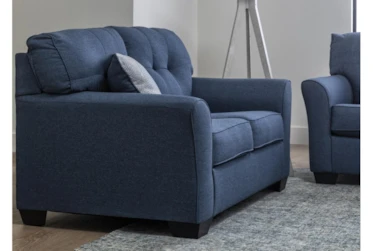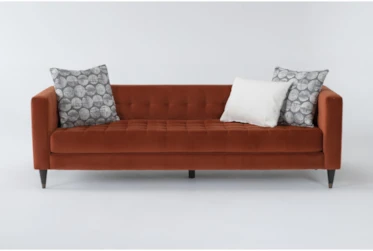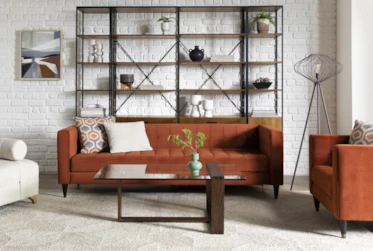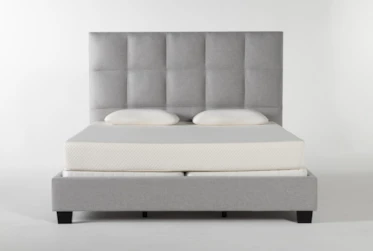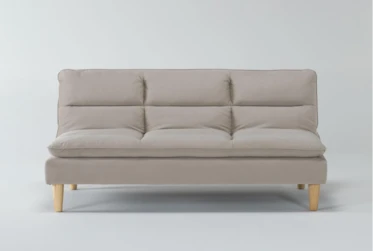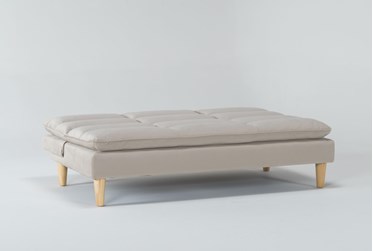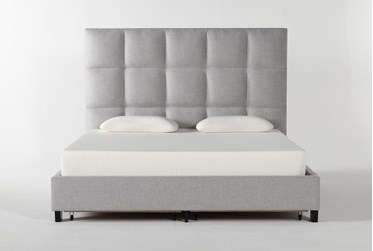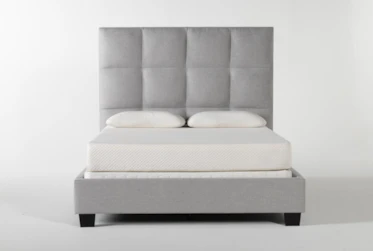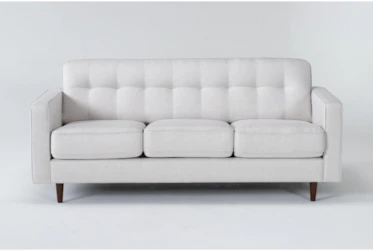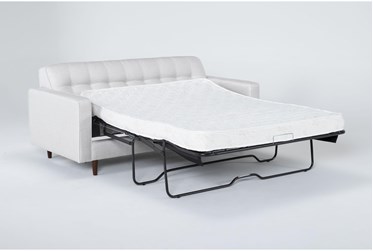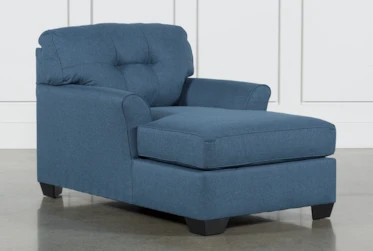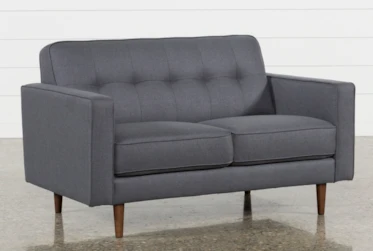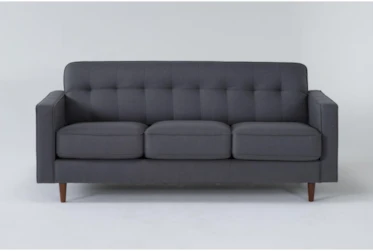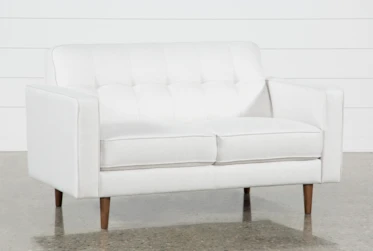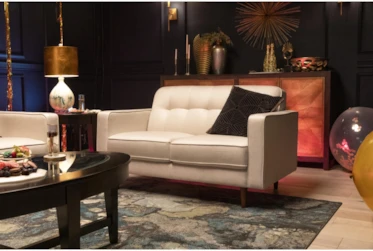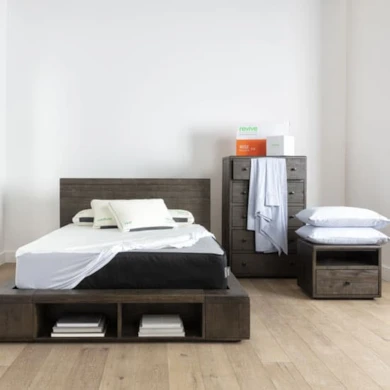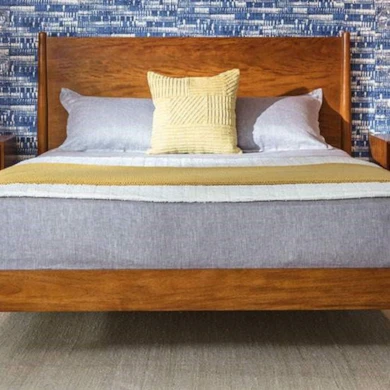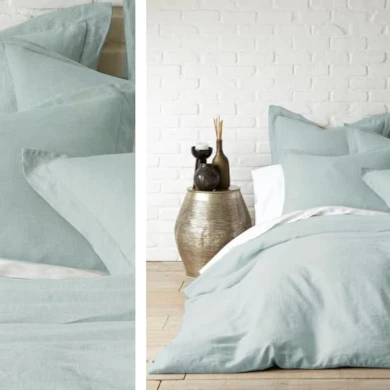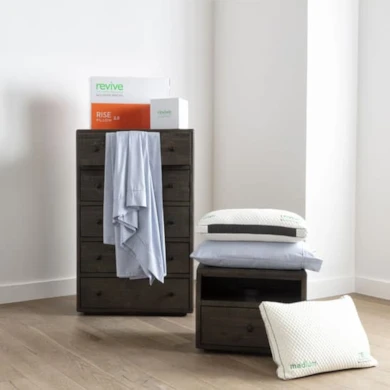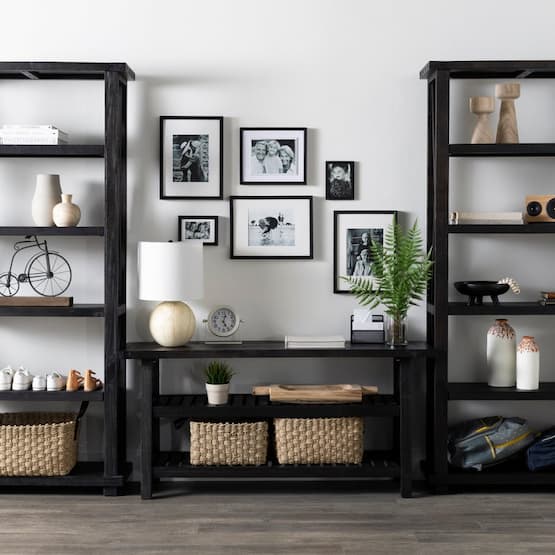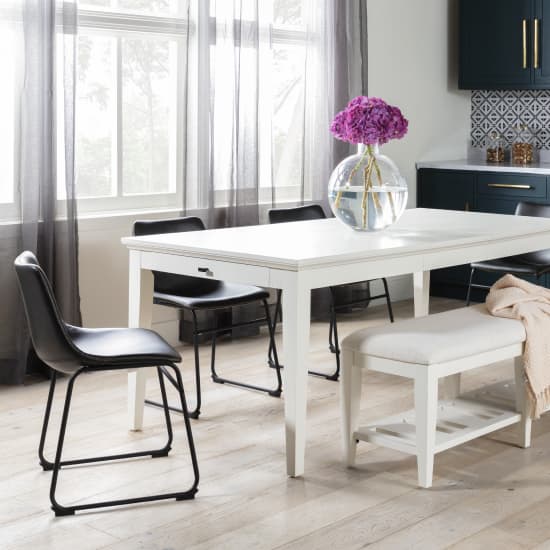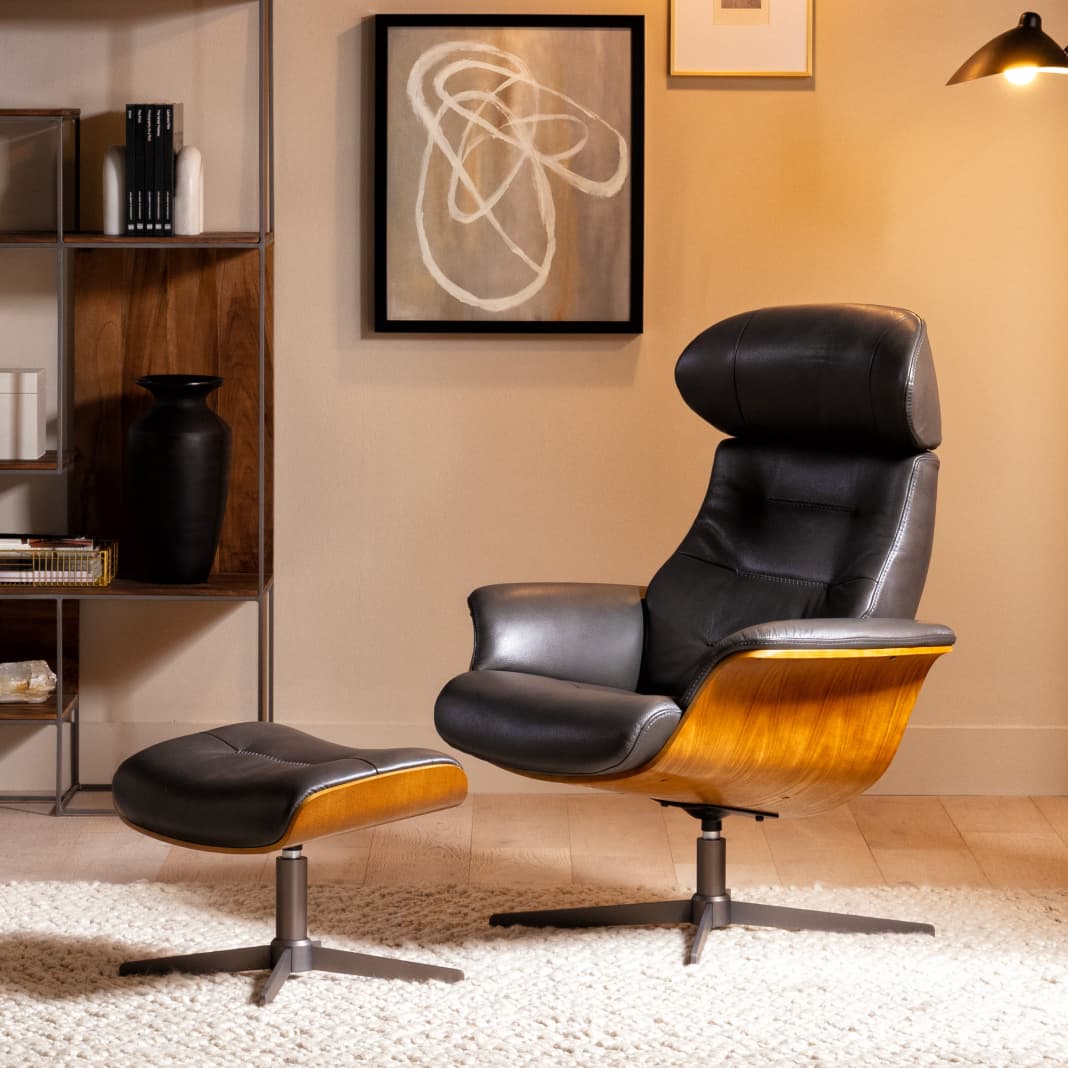Comforter Size Guide
Guide to the Comforter Sizes
Sometimes, it’s not as simple as buying a Twin comforter for a Twin bed, a Queen comforter for a Queen bed, a King comforter for a King bed, and so forth. Sometimes, a manufacturer’s recommendations for a comforter size don’t take into account your preferences for how far the comforter should fall from the bed. One Twin-sized comforter may be designed to fall short of the base of the mattress – while another may be designed to graze the floor. For this reason, it’s important to read the comforter’s exact dimensions before buying – and know the exact dimensions you need for your overall bed look. For easier shopping, reference your ideal comforter size in the chart below!
| Mattress Size | Bed Height | Estimated Comforter Size |
|---|---|---|
| Twin | 15” to 17” | 66” to 68” W 86” to 88” L |
| Twin XL | 15” to 17” | 68” to 70” W 90” to 94” L |
| Full | 22” to 26” | 85” to 88” W 90” to 92” L |
| Queen | 23” to 27” | 90” to 92” W 100” to 104” L |
| California King | 23” to 27” | 100” to 102” W 111” to 114” L |
| Eastern King | 23” to 27” | 90 to 92” W 104” to 106” L |
How Long Should a Comforter Be?
The length a comforter hangs from the sides of a bed varies from size to size. Even for a same-sized mattress, comforter sizing varies – manufacturers know that consumers have different tastes in exactly how “big” a comforter should be for a particular bed size. This is why finding the right comforter size for your bedroom can be so difficult; there’s no magic number or one-size-fits-all to make the shopping easy.
Before buying a comforter, you’ll want to get a sense of what exactly you want out of your comforter. Do you want it to hang almost to the floor? Touching the floor? Just until the box spring starts – or perhaps where it ends?
Comforters that that touch the floor are less popular – only because they are the trickiest to get right. Size just a few inches too big, and the comforter will drag and collect along the floor and easily fall into a sloppier look. Size a few inches too short, and there’ll be a gap between the floor and the end of the comforter (which is fine, but also won’t produce that extra-elegant feel that comes with grazing the floor). These types of extra-long comforters also work best with an extra throw blanket draped across its surface to sort of “break up” the comforter’s ubiquity and define the space.
Comforters that hang just above the floor are a popular look. These sizes are also usually considered oversize and take up too much room to be able to be tucked into the mattress; rather leave this size draped over the bed’s edges for flowy, elegant bedroom style.
Comforters that hang halfway down create a casual elegance. This look can be untucked, so that the comforter drapes around the edges of a bed, or tucked in and around all sides of a bed for a more tailored appearance. Either way, this look benefits from the addition of a bed skirt to fill in the space between the floor and where the comforter begins.
Short comforters that hang right where the mattress ends are ideal for a more casual look. Since they occupy less space, they take less work overall – in terms of washing, making the bed and when it comes to storage. Short comforters can be “dressed up” for a more elegant bedroom look with the pairing of a bed skirt, or a piece of cloth designed to attach to and cover the bottom of a bed frame.
Are Oversized Comforters Better?
Oversized comforters provide a more luxurious look, but it’s more difficult to determine whether they will fit your bed in just the right way than with standard comforters. What you shouldn’t do? Trust the comforter’s packaging label that it will work for your size bed. What you should do? Examine the length and width of the comforter and compare that to the length, width and depth of your bed (using the method below) to determine if it will hang your preferred length.
An oversized comforter definitely brings more of a statement and is an easy way to make a bedroom feel more inviting – with the caveat that you style it right! An oversized comforter hanging over the sides of a bed will naturally create layers, folds and “drapery,” especially around the bed’s corners where the sides of a comforter will naturally meet and crevice. Play to the layered look by adding layers to the made bed: use pillow shams and throw pillows nearest to the headboard (with the larger ones closer to the headboard). Balance out the look by draping a throw blanket near the foot of the bed!
Aside from aesthetic, the main reason to choose an oversize comforter is that you have a tall bed (whether through an extra-deep mattress, bed frame, box spring, pillow top layer or mattress topper – or all of the above) and want to cover it all. Instead of needing to buy a bed skirt and coordinating the size of the bed skirt with the size of the comforter, an oversize comforter gets the job done in one take.
How to Determine Your Comforter Size
First measure your mattress. (Even if you already know if it’s a Twin, Queen, etc.) Measure the length of the mattress (the longest side), the width (from left to right) and the depth (the height of the mattress).
Next, calculate the width of the comforter: double the mattress’s depth and add it to the mattress’s width. Add a few inches to this total if you want the comforter to hang closer to the ground; keep the total as is if you want the comforter to hang just where the mattress ends.
To calculate the length of the comforter, add the mattress’s depth to the mattress’s length. This will be the minimum your comforter needs to be in order to completely cover the mattress. If you want a longer comforter, feel free to add a few inches to this total.
If you want a comforter that grazes the floor exactly, it’s best to not eyeball the few extra inches you add to the length and width; instead, precise calculations are better. For the width of the comforter, double the distance from the floor to the top of the mattress and then add that total to the mattress’s width. For the length of the comforter, no need to double anything – simply take the distance from the floor to the top of the mattress and add it to the length of the mattress.
Can You Use a Comforter with a Footboard?
If your bed has a footboard, you may be wondering whether or not you can even use a comforter with it. (Unlike with beds without footboards, a bed with a standard footboard doesn’t exactly allow you to throw on a bedspread and be done with “making the bed.”) The answer is yes, you can. Exactly how the comforter is styled with a footboard depends on the height of the footboard. For tall footboards that rise a few inches over the top of the mattress, it’s best to tuck the comforter into the gap between the footboard and the mattress. For shorter boards that rise just above or short of the top of the mattress, it may be easier for you to drape the comforter over the footboard as you would normally do on a bed without a footboard.
Whether or not you choose to drape a comforter over a footboard or leave it tucked in will also depend on the thickness of the comforter and the amount of space you have between the footboard and the mattress. For puffy comforters (like goose down), it’s usually easier to drape over; for thin comforters (like quilts), it’s usually easier to tuck in. (Needing to tuck in a comforter every morning is another factor to consider when choosing a type of comforter; the extra step in the bed-making process can be a dealbreaker for some.)
Dress Up Your Bed
— More Great Articles —
Comforters + Beyond
Read the Latest
Editorial Disclaimer: Articles featuring tips and advice are intended for educational purposes and only as general recommendations. Always practice personal discretion when using and caring for furniture, decor and related items.
